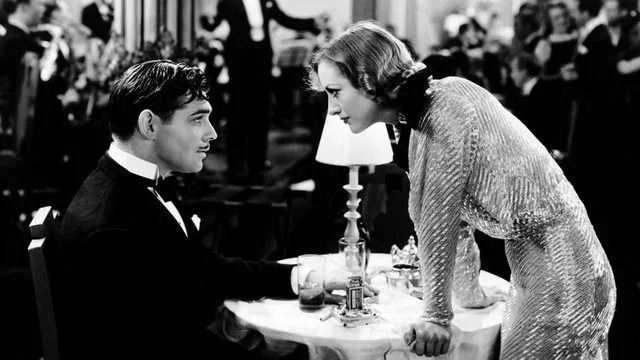 |
| Eleanor Powell and Fred Astaire in Broadway Melody of 1940 |
"Glorious Technicolor," as a song in Silk Stockings (Rouben Mamoulian, 1957) dubs it, was the hallmark of MGM's musicals, starting with The Wizard of Oz (Victor Fleming, 1939). The fourth and final iteration of MGM's series that started with the Oscar-winning (but now laughably antique) The Broadway Melody (Harry Beaumont, 1929) and continued with Broadway Melody of 1936 (Roy Del Ruth, 1935) and Broadway Melody of 1938 (Del Ruth, 1937) was supposed to be in color, but uncertainty about the European market where war was breaking out caused the studio to cut back on the budget. But who needs Technicolor when you have talent like Cole Porter, Fred Astaire, and Eleanor Powell, especially in the big shiny black set for the finale, with Astaire and Powell dancing to "Begin the Beguine"? We probably won't see the likes of that again ever. For that matter, who needs a plot? Most movie musical screenplays were just threads to string the gems on, and the one for Broadway Melody of 1940 is no exception. Astaire and George Murphy play a down-and-out dance team, one of whom gets a chance at the big time, performing with Powell in a new Broadway show. The problem is that there's a mixup about which one is owed the big break. Astaire's character is the one picked by the talent-scouting producer (Frank Morgan), but through the kind of mishap that mis-happens only in the movies, the co-producer (Ian Hunter) thinks that Murphy's character is the one he's chosen. Both guys fall in love with Powell's character, of course, and everything has to be sorted out. Norman Taurog had a good hand with this sort of comedy, thankfully, and Morgan's befuddlement, which also involves an ermine cape that he lends his dates, is moderately amusing. The only flaw is that the movie follows the tradition of its predecessors in inserting vaudeville-style specialty acts between the musical numbers, so we endure extended routines by a juggler and a comic soprano before Astaire, Powell, and Murphy can sing and dance again. This was the only teaming of Astaire and Powell, and each was reportedly intimidated by the other. Powell's dance style was more athletic and acrobatic than Astaire's, and it's demonstrated spectacularly in her solo number "All Ashore," but any fears that their styles might not mesh were put to rest by their duets to "I Concentrate on You" and "Begin the Beguine." Murphy gets shown up by both, and he looks ridiculous dancing on tippy-toes in the "Between You and Me" duet with Powell, which may be why he quit hoofing and went into politics.























